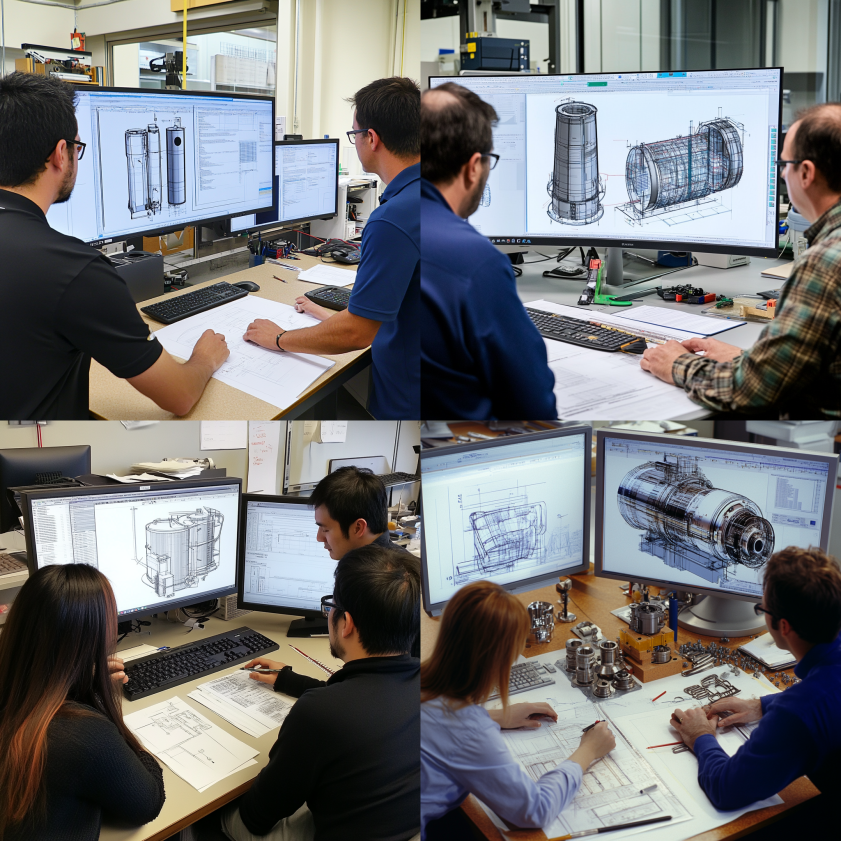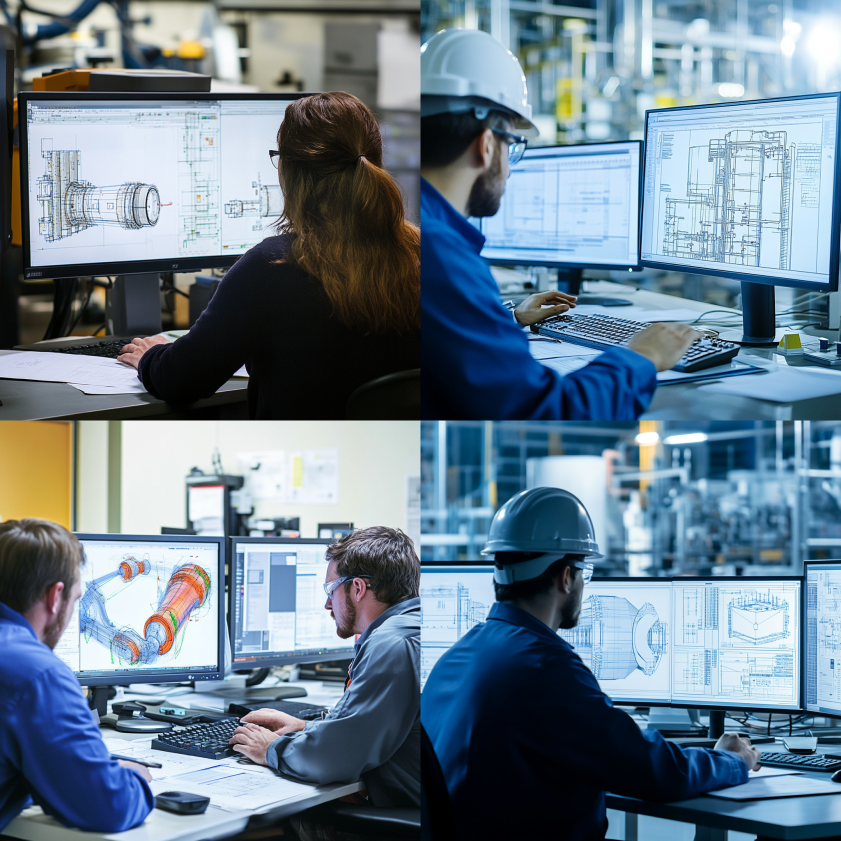
Designing a safe and reliable system starts with understanding the fundamentals of pressure vessel design. Whether used in chemical processing, power generation, or industrial manufacturing, the success of any pressure vessel design depends on accurately defined operating conditions. These go beyond internal pressure—they also include temperature, material selection, corrosion resistance, and external stress factors.
Creating a compliant and long-lasting vessel requires evaluating every detail of the pressure vessel design process. Let’s break down the critical factors that engineers must consider:
The vessel must be designed to withstand its maximum internal pressure safely. Design pressure is typically higher than operating pressure to include a safety margin. Proper pressure vessel design ensures this margin aligns with regulatory codes like ASME Section VIII.
Temperature changes material strength and behavior. A sound pressure vessel design must account for:
Materials must resist internal pressure, external forces, and corrosion. Common materials in pressure vessel design include:
The choice depends on the vessel’s intended application and environmental exposure.
A proper pressure vessel design includes extra wall thickness to compensate for material loss over time due to corrosion or erosion.
Pressure vessels often undergo repeated pressure cycles. Fatigue analysis is a critical part of the pressure vessel design process to prevent long-term structural failure.
In addition to internal pressure, a complete pressure vessel design also accounts for wind loads, seismic activity, and piping stress.
Successful pressure vessel design ensures safe operation, long-term durability, and regulatory compliance. By understanding factors like pressure, temperature, material strength, and environmental influences, engineers can create vessels that meet industry standards and customer expectations.
Whether you’re building a new system or evaluating an existing one, mastering pressure vessel design is key to operational success.

Design conditions refer to the anticipated operational environment that a pressure vessel must safely withstand during its lifecycle. These conditions set the baseline for determining the vessel’s dimensions, materials, thickness, welding methods, inspection protocols, and compliance standards.
The American Society of Mechanical Engineers (ASME), specifically ASME Section VIII, Division 1, defines industry standards that dictate how these conditions are measured and applied. Failing to account for accurate design parameters can lead to equipment failure, environmental hazards, and significant financial liabilities.
Designing a vessel based on worst-case operating conditions ensures a margin of safety. It’s not about overengineering—it’s about calculated, standards-driven design to meet performance, safety, and economic goals.

One of the most critical design conditions is pressure. However, there’s a distinct difference between design pressure and working pressure:
Properly setting the design pressure ensures the vessel can handle rare overpressure situations without failure. This factor directly influences thickness calculations, reinforcement needs, and testing requirements. For instance, a reactor vessel used in chemical processing may have a design pressure 10–15% higher than its normal operating level.
Learn more about MAWP from Engineering Toolbox.
Temperature is another fundamental condition. Pressure vessels may operate in cryogenic, ambient, or high-temperature environments. Each condition affects how the metal behaves:
The design temperature defines the minimum and maximum range in which the vessel will operate safely. According to ASME, the chosen material must demonstrate acceptable performance at these limits without undergoing significant deformation or failure.
Corrosion is a gradual enemy of all metal vessels. Design engineers anticipate material loss by adding a corrosion allowance—a thickness margin included in the vessel wall.
For example, if the expected corrosion rate is 0.01 inches/year and the vessel’s lifespan is 20 years, a 0.2-inch corrosion allowance may be added. In highly corrosive environments, designers may also opt for corrosion-resistant alloys or internal linings.
Material selection is often based on:
Properly choosing materials mitigates long-term risk and reduces maintenance costs.
Refer to NACE International for material compatibility standards and corrosion resistance guidelines.
Pressure vessels must be designed to resist not just internal pressure but also external loads, such as:
These loads can introduce bending moments and axial stresses. ASME Section VIII provides detailed equations for handling these variables. Engineers must calculate stresses in vertical vessels caused by wind or base shear during seismic events.
Failing to consider these external loads may lead to buckling, support structure failure, or catastrophic rupture.
In industries such as oil & gas or petrochemicals, vessels frequently undergo cyclic loading—repeated pressurization and depressurization. Over time, this can cause metal fatigue, even if stress levels are within safe limits.
Fatigue analysis evaluates how many cycles a vessel can withstand before cracks initiate or propagate. ASME provides methodologies to assess fatigue based on the stress range and number of cycles. For critical vessels, stress-relief treatments and non-destructive testing (NDT) methods like radiography or ultrasonic inspection are applied.
Design conditions for pressure vessels go far beyond calculating internal pressure. They represent a complex interplay of mechanical stress, environmental exposure, temperature shifts, and long-term fatigue—all governed by robust industry standards like ASME Section VIII.
An accurate definition of these conditions ensures:
Partnering with an experienced, standards-driven manufacturer like Red River ensures your pressure vessel performs safely across its entire lifecycle—from design through fabrication and deployment.
Red River specializes in the design and manufacturing of pressure vessels. We also fabricate related items such as prefabricated spools and skid packages.
Reach out to us today and experience the Red River difference. Where American-made products and American Values come together, we care more.
Design pressure is the maximum pressure to define vessel strength, including a safety margin. Working pressure is the typical operating pressure during normal service.
It compensates for material loss due to corrosion over time, helping maintain structural integrity and preventing early failure.
Material strength, ductility, and fatigue behavior all vary with temperature. The vessel must remain safe across the full temperature range.
The ASME Boiler and Pressure Vessel Code, specifically Section VIII, is the leading standard in North America. It details the required design calculations, materials, inspection, and testing procedures.
Wind can cause bending in vertical vessels, while seismic loads induce lateral forces. Both are factored into support design and anchorage.
Fatigue occurs from repeated stress cycles and can lead to crack formation. Design must consider expected cycles and stress ranges.
Yes. While conservative design improves safety, it can also lead to unnecessary material use and higher costs. The goal is optimized safety, not just overbuilding.
Through fatigue life analysis based on known load histories. Advanced simulation software and lab testing help validate design assumptions.
In the realm of industrial solutions, Red River emerges as a pioneer, offering a diverse range of custom-engineered products and facilities. Among our specialties is the design and production of Custom/OEM Pressure Vessels, meticulously crafted to meet individual client requirements, ensuring performance under various pressure conditions. Our expertise extends to the domain of prefabrication, where Red River leads with distinction.
The company excels in creating prefabricated facilities, modules, and packages, reinforcing its stance as a forerunner in innovation and quality. This proficiency is further mirrored in their Modular Skids offering, where they provide an array of Modular Fabricated Skid Packages and Packaged equipment. Each piece is tailored to client specifications, underlining their commitment to delivering precision and excellence in every project they undertake.